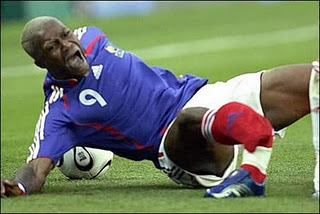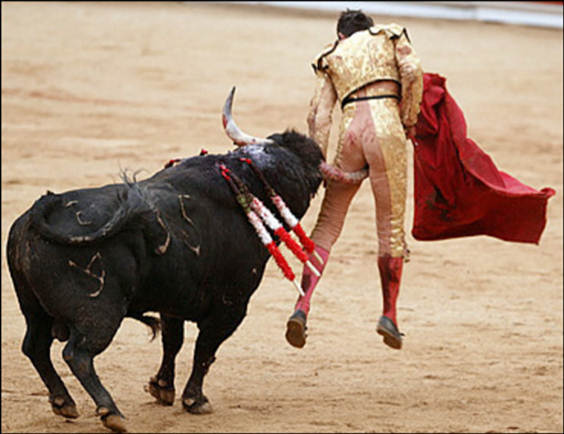Tomorrow is Super Bowl Sunday, a de facto American sports holiday! Last year, over 111 million Americans watched this exhibition of athleticism and violence. In fact, the last four Super Bowls have been the four most watched television programs in the United States. In other words, it’s way beyond popular. Maybe you’ll be tossing a pigskin around today with friends and family. Maybe you’ll play a game before the big game. If so, you should know what you (and they) are up against.
Athletes are at risk for injuries for different reasons than weekend warriors. Although accidents happen to everyone, poor conditioning and training, propensities not to stretch or warm up, relatively poorer playing conditions, and use of inferior equipment (or lack of use of any at all) make your adventures a little more risky. Straight, No Chaser has reviewed many common sports injuries. Links to some are listed below, and others you can read up on just by typing what you’re looking for into the search box on the right.
The most common sports injuries include the following conditions.
- Sprains and strains, particularly ankle sprains
- Knee injuries
- Bruises (contusions) and other muscle injuries
- Achilles tendon injuries
- Rotator cuff injuries
- Fractures
- Dislocations
Of course, the most common aren’t all the rage. Everyone’s concerned about concussions. Here’s a Straight, No Chaser review of concussions.
The weekend warrior is too often engaged in a testosterone fest and doesn’t listen to his body. If you get hurt, stop. If you don’t listen to your body, someone more serious could be on the verge of happening.
Here are some tips to help you avoid sports injuries.
- Always warm up, regardless of the sport. It’s especially helpful to stretch the Achilles tendon, hamstring and quadriceps areas and hold the positions without a bouncing motion.
- Avoid bending knees past 90 degrees.
- Avoid twisting knees. This is best done by keeping your feet as flat as possible during stretches and running.
- If you’re jumping, land with your knees bent.
- Cool down following vigorous sports. You want your heart rate to come down gradually.
- Wear properly fitting shoes. You can avoid stress fractures and sprains by wearing shoes that provide shock absorption and stability.
- Avoid running on hard surfaces like asphalt and concrete. It’s preferable to run on softer, flat surfaces. Appreciate that running uphill may increase the stress on the Achilles tendon and the leg itself.
- Know when to stop.
We’ve discussed the RICE method of treating strains and sprains in the past. Make a habit of this for even minor ankle, knee, wrist, elbow and shoulder sprains. It helps with pain and swelling, and it also speeds recovery.
Whether you’re enjoying the Big Game or just your game, it’s good to know what you’re looking to avoid. Don’t let a sports injury sneak up behind you. If you are in need of information or advice, contact your personal healthcare consultants at 844-SMA-TALK or www.sterlingmedicaladvice.com. Have a great day, and enjoy the game.
Thanks for liking and following Straight, No Chaser! This public service provides a sample of what http://www.SterlingMedicalAdvice.com (SMA) offers. Please share our page with your friends on WordPress, Facebook @ SterlingMedicalAdvice.com and Twitter at @asksterlingmd.
Copyright © 2014 · Sterling Initiatives, LLC · Powered by WordPress




